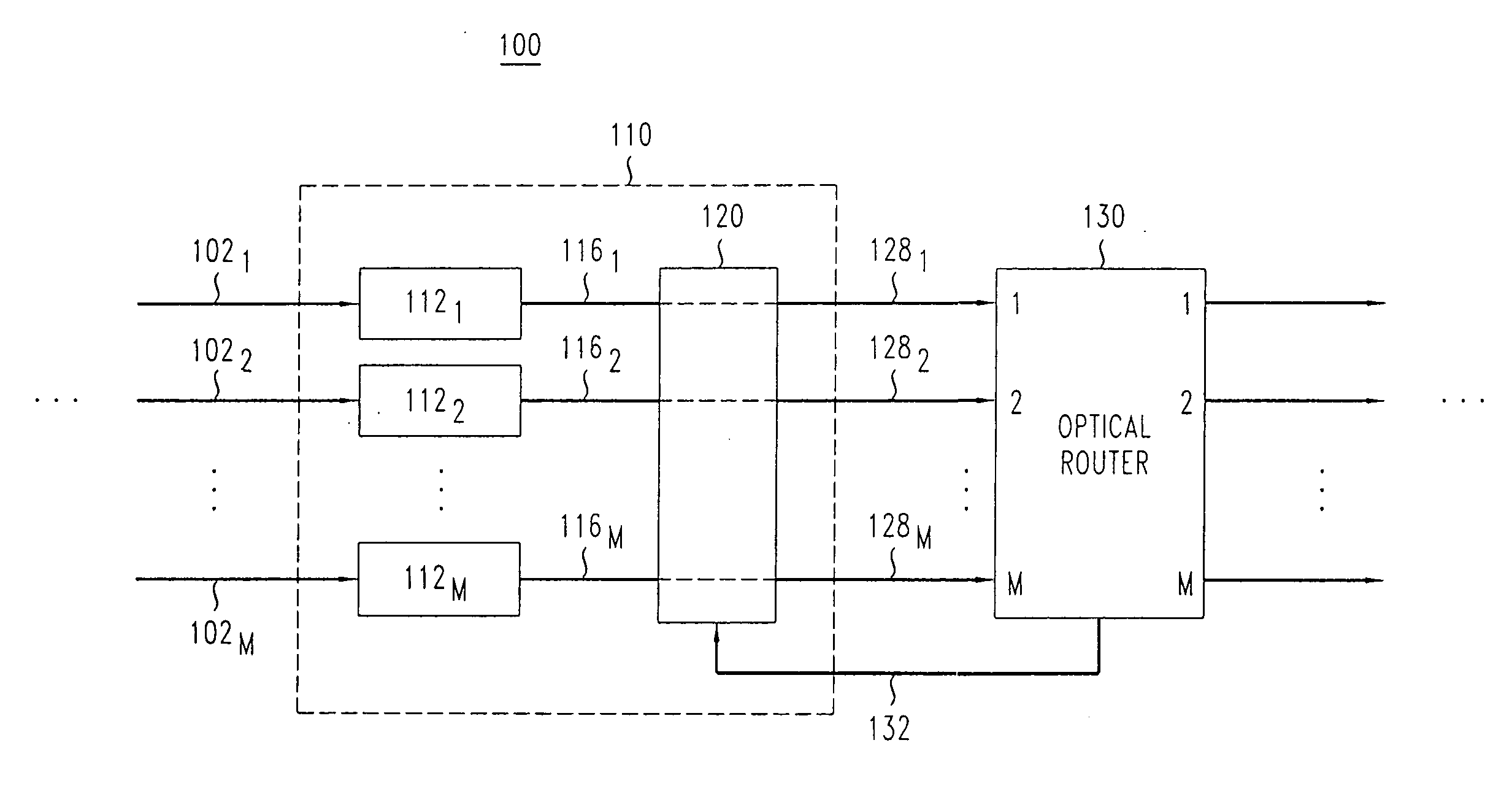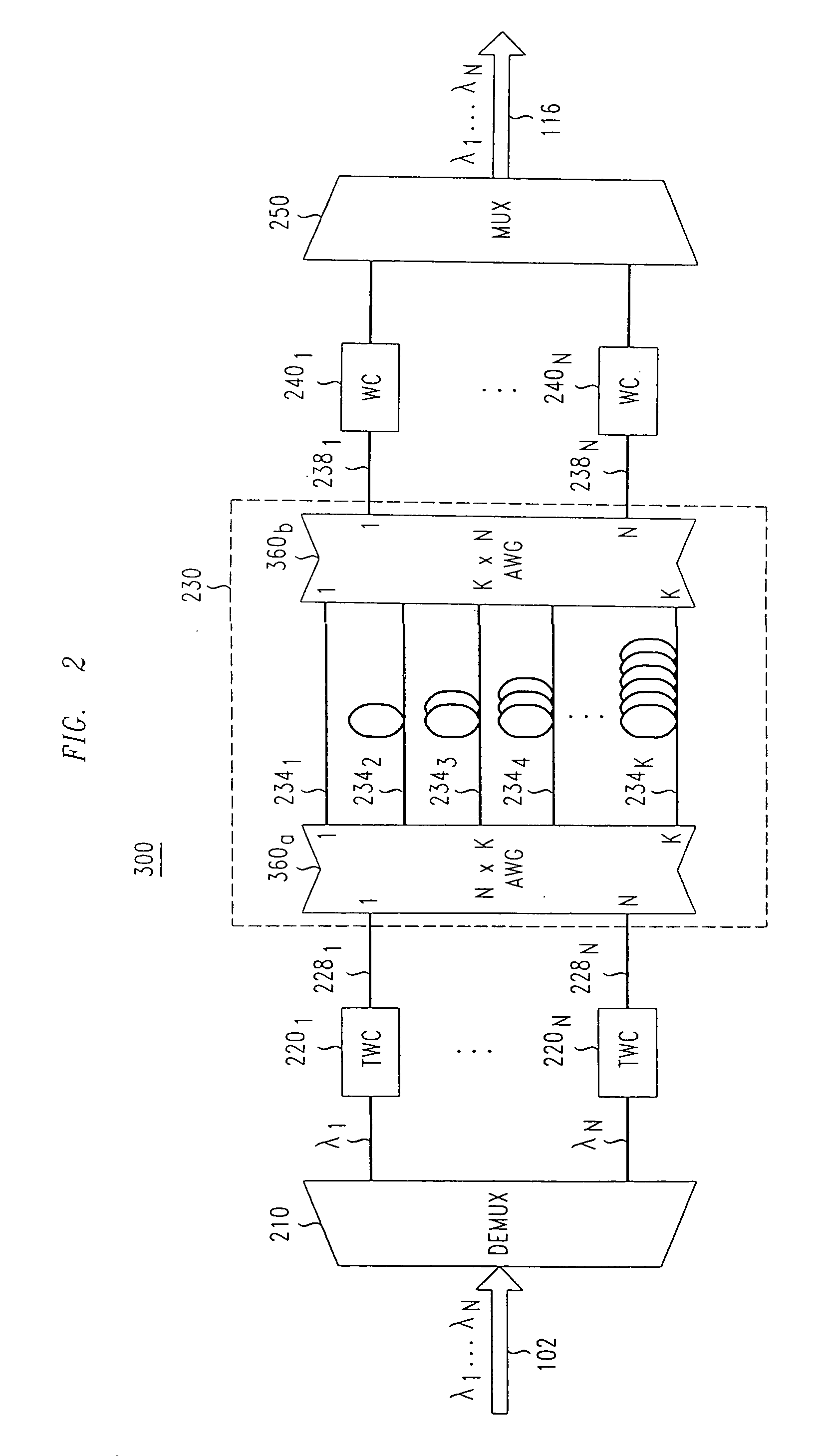Multi-channel optical arrayed time buffer
- Summary
- Abstract
- Description
- Claims
- Application Information
AI Technical Summary
Benefits of technology
Problems solved by technology
Method used
Image
Examples
Embodiment Construction
[0023]FIG. 1 shows a portion of an optical communication system 100 according to an embodiment of the invention. System 100 receives a plurality of wavelength division multiplexing (WDM) signals 1021-102M from external network components (not shown). Each of signals 1021-102M has N carrier wavelengths (λ1-λN), each modulated to carry data packets.
[0024]An optical communication system similar to system 100 is usually designed so that each of its optical elements has appropriate spectral characteristics that enable proper handling of the WDM signals that populate the system. The number of and spectral separation between the WDM components of a WDM signal are usually set based on a convention or standard. For example, the most common frequency (wavelength) grid is that used for dense WDM (WDM) and defined by a standard promulgated by the International Telecommunication Union (see ITU-T G.694.1). This grid is defined relative to 193.1 THz and extends from about 191.7 THz to about 196.1 ...
PUM
 Login to View More
Login to View More Abstract
Description
Claims
Application Information
 Login to View More
Login to View More - R&D
- Intellectual Property
- Life Sciences
- Materials
- Tech Scout
- Unparalleled Data Quality
- Higher Quality Content
- 60% Fewer Hallucinations
Browse by: Latest US Patents, China's latest patents, Technical Efficacy Thesaurus, Application Domain, Technology Topic, Popular Technical Reports.
© 2025 PatSnap. All rights reserved.Legal|Privacy policy|Modern Slavery Act Transparency Statement|Sitemap|About US| Contact US: help@patsnap.com



